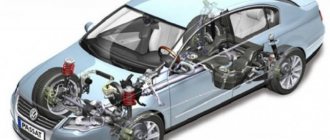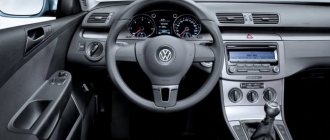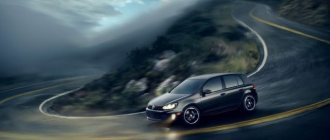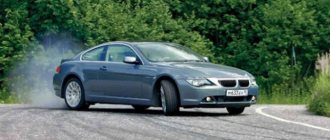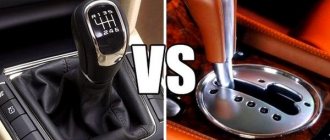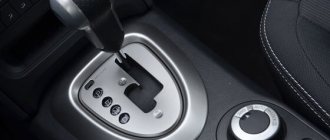In Russia, a couple of years ago, the number of cars with automatic transmission and manual transmission was approximately the same, although previous years had seen a rapid increase in purchases of vehicles with a CVT. For comparison: in the USA, 94% of drivers drive automatic transmissions, because they appeared much earlier than here. And it’s not hard to guess that the skills to drive a manual car are practically lost there, which cannot be said about the Russian Federation. However, the younger generation, like women, already need detailed instructions on how to drive such cars. But before we begin a detailed description of this process, we first need to name the reasons why cars with manual transmission are still popular in Russia:
— powerful, sports cars are always equipped with such transmissions;
— cars with manual transmission are cheaper;
— “mechanics” allows you to feel the car better and control it faster;
— equipping a vehicle with such a “box” allows you to save fuel;
— in terms of belt suitability, a manual transmission is also preferable compared to an automatic transmission, and the cost of restoring the unit’s functionality is much less.
The following instructions are addressed to everyone who wants to learn how to drive a manual car. Moreover, it doesn’t matter at all how old you are, what class the vehicle belongs to, what its power is, etc.
About programs
When owning a car with a manual transmission, you must develop the skill of independently shifting gears until it becomes automatic. There is no electronics here that equalizes the speed of rotation of the gears on the gearbox shaft without driver participation. But there is a clutch pedal, which, by pressing it with your foot, temporarily disables the transmission specifically in order to move the lever to the desired position and change the speed. Just remember: you need to squeeze this pedal all the way!
By the way, the majority of cars are equipped with 4-5-speed manual transmissions; in addition, there is one reverse gear. Let's figure out what they are for.
"Neutral".
Manual driving lessons for beginners
should not be practiced before you understand what the controls are and what neutral gear is. In essence, this is the position of the gearshift lever, indicating that torque is not transmitted from the engine to the wheels, and the car cannot move. No matter how much you accelerate, nothing will happen. If you move the lever to another position with the clutch disengaged, the speed will turn on.
First speed
intended for touching. In this case, the engine operates at high speeds, but you will not reach a speed of more than 15-20 km per hour. Yes, this is not necessary, you will simply burn excess fuel. Therefore, almost immediately you need to engage second gear.
Second speed
is a workhorse that allows you to go down a slope and maneuver in a traffic jam. It is transitional to the so-called lower 3-5 gears, allowing you to develop a higher speed. We will not focus on them, since they switch in the same way.
Reverse gear
allows you to develop greater speed compared to the first. However, it is not recommended to move with it for a long time - the transmission parts wear out too quickly. Without reverse gear it is almost impossible to park in urban conditions, and it also allows you to maneuver in organic space.
Manual driving basics
Before driving on roads, you should practice driving on level ground without heavy traffic. At one time, every experienced driver was taught by a driving instructor according to the following scheme:
- theory about the driver's seat and manual transmission;
- getting into the car and adjusting the seat, steering column, and rear-view mirrors;
- starting in different modes and maneuvering.
Attention: The most effective training is in a car whose manual transmission is adjusted and free of wear.
Driver's seat
You can drive a car with a manual transmission only after customizing the driver’s seat:
- after landing, the chair should be adjusted so that your legs can reach the pedals freely;
- the tilt and reach of the steering column is adjusted to the driver’s anatomy;
- then the tilt of the side rear-view mirrors and the central mirror located in the cabin is adjusted.
Seat adjustment
Steering wheel adjustment
Adjusting the mirrors
It is recommended to make these adjustments before each trip. Since in parking mode the side mirrors may be hit by pedestrians. Before you learn to drive, you should practice using the pedals and gearshift lever with the engine turned off.
Devices
Learning how to properly drive a manual begins with familiarization with the instruments on the panel:
- speedometer – determines the speed of movement;
- tachometer – shows the speed of the drive shaft;
- fuel level indicator – indicates the degree of filling of the tank with gasoline/diesel;
- temperature indicator – displays the temperature of the antifreeze in the cooling system.
In addition, the panel has indicator lamps for the main components of the machine. If any of them light up, the problem must be corrected before operating the machine.
For a car with a manual transmission, the main device is the tachometer, since it is the revolutions that change gears. In its absence, the speedometer becomes the main device, since the speed of the vehicle can also be used to determine the speed of the drive shaft.
Pedals and levers
To gain skills on how to use a manual transmission, you need to understand the pedals:
- clutch – intended for the driver’s left foot;
- gas (accelerator) – the pedal is installed under the user’s right foot at some distance from the clutch;
- brake - the pedal is also pressed with the right foot, located next to the accelerator.
Control pedals
This arrangement of pedals in a car reduces the likelihood of accidents and mistakes:
- the right foot either presses on the gas or brakes the car, it is impossible to press them at the same time;
- The left foot is always on the clutch pedal.
The main nuances of driving a car are:
- gas – pressed smoothly, released sharply;
- brake – first, free play is selected, then the pedal is pressed smoothly; in an emergency, the brake is pressed sharply;
- clutch - to engage, you must press it all the way with any intensity, release the pedal smoothly when starting and accelerating, sharply to switch from high gear to low.
Attention: For comfortable driving, especially at first, you should choose comfortable shoes with medium-thick soles - shoes (for women without high heels), boots, ankle boots. This will help you “feel” the clutch pedal and strengthen the skill of starting off.
Manual transmission lever
Cars with one drive axle (front-wheel drive or rear-wheel drive) are equipped only with a gearbox, so gear shifting is carried out with a single lever. If there are two axles, a transfer case is added, and a second lever appears.
Box and transfer levers
Gear Shift Patterns
During the first lessons, a manual transmission driving instructor teaches the driver how to change gears with the engine not running. Gear shift patterns are not always the same on cars from different manufacturers. However, general principles apply:
- 3 and 4 speeds are activated from neutral forward and backward;
- 1st and 2nd gears are switched to the left, then forward and backward;
- 5 and reverse gear is most often switched to the right, then forward and backward.
Shift Pattern Options
However, on domestic VAZs, the reverse speed can be switched on according to the “further to the left, then forward” scheme, so a diagram according to which the speeds are switched must be marked on the lever, and special techniques are used for reverse gear:
- the lever needs to be recessed deeper;
- It is necessary to lift the bushing located under the lever handle with your fingers.
Attention: During training, the engine must be turned off, switch until the pattern is mastered and the lever is moved to the desired position by hand without turning your head in its direction.
Start of movement
To move a car with a manual transmission, you must perform the following sequence of actions:
- press the clutch pedal and set the handle to the neutral position;
- start the engine with the key and warm it up depending on the ambient temperature for 2 - 15 minutes (summer, winter, respectively);
- engage low (first) gear;
- smoothly press the accelerator pedal, while simultaneously also smoothly releasing the clutch pedal with a 2-second delay in the middle of its stroke.
Starting on the mechanics
Attention: While warming up the internal combustion engine, it is better to keep the clutch pedal pressed for several minutes so that the oil inside the box heats up faster.
Then you should stop, turn off the engine, then start the car and move off several more times to achieve a confident start. The technique of starting uphill, downhill, when turning at an intersection and in a straight line uses the same principle above, but with some additions.
In a straight line
The first exercise that a manual transmission driving instructor asks is how to drive in a straight line. In addition to the above operations, in this case you should pay attention to the following nuances:
- in theory and when passing the exam, you should only start at the first, lowest speed;
- however, in the future this gear may fail; to get to the service station you can start in 2nd gear, but only in a straight line;
- You need to get used to releasing the clutch pedal within 2 seconds, since a longer period is harmful to the clutch disc.
Starting a car is the basis of driving, so first we learn on flat areas with a slope of 4 degrees maximum.
Uphill
Driving uphill in a car with a manual transmission is much more difficult than in an automatic. After parking on a mountain as the road climbs, the parking brake is fully applied, the front wheels are turned to the side of the road, the gear shift lever is usually set to 1st, 2nd or reverse gear for greater safety, so working with the parking brake is added to the above steps:
- after landing and adjusting the rear-view mirrors, you start the engine and warm it up depending on the season;
- when starting uphill, first press the clutch pedal with your left foot, the brake pedal with your right foot, the lever is moved to 1st low gear;
- the right foot moves to the gas pedal;
- then the parking brake is released at the same time, the accelerator is smoothly pressed and the clutch pedal is also smoothly released.
Starting uphill
Attention: The machine must move straight forward without rolling back. Otherwise, the engine may stall.
The exercise is called a “flyover” and is included in the mandatory program when passing the practical part of the driver’s license training.
From the mountain
The downhill start is a very simple exercise, even for dummies. The procedure here changes slightly:
- after engaging first gear, the right foot depresses the brake pedal;
- The handbrake is released completely;
- the right foot is moved to the gas pedal;
- the car begins to roll downhill, which makes starting easier.
This technique can be used when starting an internal combustion engine with a completely discharged battery. Even if gears 1 are broken, the speed of gear ratio 2 and even 3 is enough to start from the mountain.
Overclocking
After starting, the vehicle is controlled in the following mode:
- acceleration of the internal combustion engine to 2500 - 3000 rpm;
- shifting to higher gear.
However, having dealt with this, you should take into account the nuances:
- switching time is 2 – 4 seconds;
- when driving uphill or with a heavily loaded car, the speed will decrease, so you should switch at 3000 rpm;
- when descending a mountain, on the contrary, it is enough to reach 2500 rpm;
- in traffic jams and within the direct line of sight of an intersection, it makes no sense to switch to top gear, since, anyway, you will immediately have to slow down;
- in each gear, the internal combustion engine operates more confidently at medium speeds, and the friction parts of the box experience less stress.
Acceleration with gear shifting
To drive at a speed of 40 - 60 km/h, it is better to switch to 3rd gear, 70 - 90 km/h to 4th gear, and so on. It is not recommended to transmit speeds of more than 4000 min-1 to the drive shaft.
Maneuvering
When learning to drive, for a beginner driving a car with a manual transmission, the speed limit is 40 km/h. However, even at such a low speed, he may need to overtake vehicles moving at a lower speed and change lanes along road markings.
So, even before overtaking/changing lanes, you need to make sure that the speed interval of the gear that the driver is currently using is sufficient so as not to interfere with the overtaken vehicle.
Overtaking on mechanics
In other words, if the car is moving in front of you at a speed of 30 km/h, you must be in at least 3rd gear, in which you can reach a speed of up to 60 km/h. In order not to interfere with a participant in traffic that you are ahead of.
Turns
Before changing speed, make sure that there are no turns in the immediate vicinity in the direction of travel, as this is harmful to gearbox parts. Turns must be negotiated at the already engaged speed, without violating its speed range or 3000 rpm.
Turns on a manual transmission are made without changing gears
Reverse
Any manual transmission driving instructor pays special attention to the reverse mode, since reverse movement is necessary when parking and leaving the parking lot. The principle here is the same as when starting, but the movement is carried out using the rear-view mirrors.
To reverse uphill, start the internal combustion engine, engage reverse gear, smoothly release the parking brake along with the clutch pedal while simultaneously pressing the accelerator.
Reverse
Attention: There are no higher reverse gears on passenger cars. Engaging reverse gear until the vehicle has come to a complete stop is strictly prohibited.
Engine braking
The basic principles of how to drive a manual car include engine braking. The manual transmission device allows you to switch from high gear to low without a 2 second delay in the clutch pedal. In this case, the speed is, on the contrary, reduced by the brake pedal.
However, in an emergency situation, when braking with a pedal will not have a significant effect due to the long braking distance, engine braking is used:
- the clutch pedal is released;
- the lever is moved to the next lowest gear;
- the clutch releases abruptly.
Engine braking
Attention: It is forbidden to jump gears, for example, switch from 5 to 3 or from 4 to 2. Even in an emergency, stop the car step by step, through all gears sequentially.
Parking
To fully learn how to drive a car in the city with a manual transmission, you need to master the skill of parking. The main points for this exercise are:
- side parking is carried out by moving backwards, as this allows you to reduce the turning radius of the vehicle;
- when parking, 1st and reverse gears are usually used, side mirrors;
- the gears are engaged after the car is finally stopped by the brake pedal;
- when parking on a steep slope, the parking brake and the “overpass” exercise are additionally used;
- After installing the vehicle, the parking brake is applied;
- on flat areas, neutral gear is engaged;
- on steep slopes, reverse or first gear is engaged, the wheels are twisted towards the side of the road/sidewalk.
When entering a garage or parking perpendicular to the curb, reverse gear is only engaged when leaving the parking space.
Stop
When stopping at intersections or at the sidewalk/sideside, the rules for driving a manual car imply the following sequence of actions:
- the clutch pedal is depressed;
- neutral gear is engaged;
- The brake pedal gradually reduces the speed of the car.
Attention: It is not recommended to stand at intersections with the clutch pedal depressed and 1st gear engaged. This causes wear on the clutch master cylinder and rod spring.
Stop on mechanics
When stopping to disembark/pick up passengers or unload items, apply the parking brake. Regardless of the slope of the roadway.
The process of mastering gears
The location of the speeds is indicated on the shift knob, and you just need to memorize them! Agree that while driving it will be difficult to peep with your eyes down. And one more thing: if you don’t want any gear to engage with a grinding or crunching noise, indicating wear on the gears, press the clutch pedal to the floor. Better yet, before getting behind the wheel, sit in the front seat next to an experienced driver and watch how he manages to synchronize gear shifting with disengaging the clutch. It will also help you learn how much speed you can achieve in a particular gear.
Manual driving lessons for beginners show that at first beginners still mentally remember where each gear is. Don't worry, further practice will allow you to do this on an unconscious level, without distraction from the road. In just a short time, both the switching speed and the smoothness of the process will increase.
Also an absolute problem for a young driver is determining at what speed of the car a particular gear should be engaged. Usually you need to follow simple advice: listen to the engine, and if its speed is low and the car does not accelerate, then you should change to a downshift. Conversely, to unload the box at very high speeds, you need to engage a higher gear.
In this practice, you can use a tachometer if it is available “on board”. Of course, depending on the model, brand and modification of the car, the shift order may be different, but it has been proven in practice that the new gear should be engaged when the engine speed reaches 3000 rpm. Additionally, it is recommended to monitor the speedometer. For example, change gears every 20-25 km/h, but remember that this is a general rule. If the car has a powerful engine, then these numbers can be definitely higher.
How not to stall?
To get moving and not stall, it is not enough to be able to operate the foot control correctly. It is necessary to increase the speed of the accelerator in time and be able to “feel” the car. The moment when the engine can stall occurs when the car has not yet started moving, but the clutch has already been released to the critical point. At this moment, the disc suddenly meets the flywheel and the motor does not have time to accelerate the gearbox. As a result of such a collision of two parts, the engine stalls.
You need to release the pedal until the speed drops. At this moment, you must definitely increase the speed and raise it to 1500 rpm. While maintaining a given crankshaft speed, the driver quickly releases the clutch and allows the car to quickly and smoothly start moving.
These recommendations are easiest to implement on high-torque 4WD vehicles. The more powerful the engine, the greater the chance of moving off smoothly without gas and not stalling. To help a weak engine, a technique is used to increase the crankshaft rotation speed. In this case, it is unlikely that you will be able to drive without slipping.
Let's start the engine!
Before turning the ignition key to start the engine, press the clutch pedal and move the manual transmission lever to neutral. Next, you need to warm up the power unit to operating temperature. Moreover, if you do this in the cold season, keep the clutch pedal pressed for the first couple of minutes while warming up - this helps to heat the frozen oil faster. And most importantly: never start the engine with the gear engaged.
, otherwise the car may move, for which you are unlikely to be prepared. So it’s not far from the accident...
How to start downhill?
This expression means that you need to start moving from the mountain. It is easier to start downhill than in a straight line. To do this you need:
- While holding the brake, depress the clutch and engage the gear.
- Release the brake.
- Smoothly release the clutch and start moving.
There is no need to step on the gas. Under the influence of gravity, the car itself will begin to coast. In this case, the clutch can be released faster.
Using the clutch pedal correctly
As already mentioned, the clutch helps the driver shift gears smoothly, but it should always be fully depressed, otherwise you risk damaging the gearbox. It is equally important to remember that the clutch pedal should be operated exclusively by the left foot. You need the right one for braking or accelerating. Manual driving lessons for beginners are rarely complete without situations where the beginner “confuses the pedals.” Needless to say, it’s better to avoid them?
After changing gear, the clutch should be released smoothly.
This is not easy to do at first. Tip: release the clutch very slowly until you feel the appearance of torque transmitted to the wheels. And avoid unnecessary acceleration in situations where the pedal is not pressed all the way to the floor. Also develop an “iron” rule, which says: even at traffic lights, keeping the clutch depressed for more than two seconds is highly not recommended.
If you watch experienced drivers, it is easy to notice that they release the clutch quite quickly. If you can’t do this, don’t have a complex. The more often you drive in heavy traffic, the more driving hours you accumulate, the more perfect this skill will become.
How to avoid jerks when starting
An uneven, jerky start to movement signals that the driver is not doing something smoothly enough. This could be the clutch releasing too quickly or the engine speed being low (not enough gas).
To avoid jerking at the start, you need to train your left foot: release the clutch smoothly. In addition, the foot must “remember” at what position of the clutch pedal the car begins to move. Novice drivers usually release the pedal almost halfway, then try to fully engage the clutch. The disc is sharply adjacent to the flywheel, hence the jerking.
If the engine speed is not enough, similar problems can also arise. You need to add speed when driving uphill, for a loaded car, or if there is a trailer.
Learning to coordinate actions
A car with a manual transmission, when driven skillfully, gives the driver a lot of drive. After all, it provides the opportunity for sharp acceleration, which is not available to a car with an automatic transmission. Driving lessons for women help to bring this action to automaticity, clearly coordinating manipulations with the controls. Let's give an example of the correct algorithm when driving at 1-2 speeds.
Depress the clutch pedal all the way and engage first gear. Gradually slowly release the clutch, at the same time equally slowly and smoothly press the gas pedal. When the clutch pedal reaches approximately the middle, you will probably feel that the torque is transmitted 100% to the wheels and the car begins to move. Smoothly release the clutch and continue to gently press the gas, pick up a speed of about 20 km/h. Now is the time to engage second gear. Release the gas, fully depress the clutch and move the manual transmission lever to second gear, release the clutch and gradually increase the gas.
How to start a car for beginners: step by step
Before moving off, the driver must do the following:
- Visually inspect the vehicle, check the wheels, headlights, dimensions, and eliminate oil and fuel leaks.
- Place the seat in a comfortable position and adjust the side mirrors.
- Fasten your seat belt and check the seat belts of passengers.
After this, you can further learn the basics of driving for beginners using mechanics. Learn the pedals and their locations. For beginners, the car often stalls, because... they don't sense the vehicle. The pedals are arranged in the following order:
- clutch;
- brake;
- gas.
The right foot presses the gas and brake, the left foot presses the clutch. The clutch must be pressed all the way, and the gas and brake must be pressed carefully, because they are sensitive to influence. Next we will talk in detail about how to properly use a manual clutch.
Downshifting
This strange term refers to how to change low gears of a car when it is slowing down. The method here is completely different compared to the operating principles of an automatic transmission; it is more complicated, but it allows you not only to reduce the speed, but also to simultaneously engage the required gear.
Why do manual driving lessons for beginners include the ability to “downshift”?
They are needed to learn how to reduce speed to a complete stop without using the brake pedal. As the pros say, you can also brake with an engine. To do this at a speed of approximately 70 km/h, perform the following manipulations:
Having depressed the clutch, engage third gear by moving your right foot from the accelerator to the brake;
slowly release the clutch - this will avoid increased speed;
Before stopping, depress the clutch again;
Do not activate the first speed as a reduction gear.
The role of the clutch in a car
To learn how to move off manually, you need to understand the operating principles of this box. The clutch in a car with a manual transmission acts as an on/off switch, disconnecting the engine from the transmission. When the left pedal is fully pressed, the connection between these components of the car is broken, at which point you can change gear. Smooth running at the beginning of movement is also ensured by the clutch.
Difficulties and errors when driving a manual transmission are associated with incorrect operation of the clutch pedal. The driver needs to bring all movements to automaticity, including starting from a standstill.
In addition, you need to remember the positions of the gearshift lever corresponding to certain gears, and when driving, shift them without looking. This is achieved by a simple exercise: with the engine turned off and parked on a level surface, depress the clutch pedal, engage first gear, and smoothly release the pedal. Such movements are repeated for all gears.
Reverse
You should be careful when handling reverse gear, as if it is engaged incorrectly, it may “jump out ”. And until the vehicle has completely stopped, never reverse!
Also keep in mind that in some passenger cars, to manipulate it, you must first press the manual transmission handle from above. Let's not forget about the high range of operation of the reverse gear compared to the first, which means: you shouldn't put pressure on the gas pedal, because you can pick up an excessively high speed.
How to get moving
Before moving off, you need to go through all the points written above. Perhaps you want to know how to quickly learn to drive a manual car, and it seems to you that you don’t need to waste time on the little things. In the future, preparation will not take much time. But a beginner should develop the right habits.
After preparation, follow the following algorithm of actions:
- Press the clutch pedal;
- Remove the car from the handbrake;
- Engage neutral if the lever is not in the desired position, and the indicator on the control panel will go out;
- Release the clutch;
- Press the clutch pedal all the way down;
- Engage first gear;
- Smoothly press the gas pedal and after a couple of meters, simultaneously release the clutch.
If the car stalls, start starting the car from the first point. Driving for beginners with a manual from scratch does not always go smoothly and that’s normal. It is advisable to conduct the first lessons on a special platform so that you can stop the car without damage. Repeat the exercise until the movement becomes smooth and the engine stops stalling.
Starting uphill
Since roads are very rarely perfectly flat, the ability to control a car parked at a vertical angle is very useful. In this case, skills are also developed through practice, but achieving the desired result is more difficult. The algorithm of actions is as follows.
1) Drive the car onto an inclined section of the road, put on the handbrake, and turn on neutral.
2) Gradually releasing the handbrake, depress the clutch pedal, shift to first gear and drive off, adding gas.
3) At a certain moment you will feel: the car is not moving backwards. This means that you managed to keep the car on the hill without applying the brake.
How to enter an overpass at a race track
The exercise “Moving from a place on an overpass” during the exam is performed in accordance with the regulations. The general principles are similar to those described above, but there are exceptions when stopping and starting on an incline.
Detailed algorithm of actions:
- Climb the overpass to the STOP-1 line.
- Depress the clutch and simultaneously press the brake pedal.
- Raise the parking brake.
- Move the gearshift lever to neutral position.
- Take your feet off the pedals.
- At the examiner’s command, start moving (the method is described above). You must not roll back more than 30 cm.
- Drive over the overpass, stop in front of the “STOP-2” line at the end of the exercise.
From April 1, 2022, the exam at the race track and in the city has been combined into one stage, but this does not mean that you no longer need to practice the “Overpass”. The skills of starting to move uphill will be tested in city conditions.
Common mistakes when climbing a hill
Novice drivers make the same mistakes when climbing a hill:
- They enter the “STOP-1” and “STOP-2” lines.
- Stop at a distance of more than 1 m from the stop line.
- Allows the vehicle to roll back to a distance of more than 30 cm.
Another mistake is a stalled engine. It occurs if you operate the clutch pedal incorrectly: release it too quickly or too early. The same error can occur when driving in urban conditions.
Practice often!
Manual driving lessons for beginners seem extremely difficult at first. And that's okay. But the more you practice, the sooner you will master literally all your skills to the point of automaticity. And if you already have your “licence” in your hands, but it’s a little scary to get behind the wheel, find a convenient area where there are no cars, and do it yourself.
When you feel that you have more or less adapted to a manual car, move on to practical experience in real road conditions. Start with simple exercises, having previously studied the terrain in which you will ride most often. It is recommended to practice early in the morning, at 5 o'clock, or after midnight - at this time there are fewer cars on the road, which will give additional confidence.
And don’t listen to friends or relatives who say that a manual transmission is archaic, outdated technology, risky, and so on. Remember: “mechanics” in the auto world is considered one of the most reliable. Of course, sometimes it reduces driving comfort, but the reward for this is increased power, fuel efficiency, and low repair costs. And most importantly: you will gain invaluable life experience and the ability to control a vehicle one hundred percent!
Mechanical riding basics
Before you learn how to learn to drive a manual car, it is advisable to understand what you will have to deal with:
- Pedals. When driving a vehicle, three pedals are used: gas (far right), brake (in the center), clutch (located on the left). Unlike an automatic transmission, it uses both feet to drive. If the driver who gets behind the wheel of a manual transmission is new, at first it will be unusual to do this.
- Checkpoint. By shifting the gears in the transmission, gears are switched. On many cars, this selector is equipped with prompts, using which it is easier to figure out which gear is selected.
- Tachometer. It is located on the instrument panel and allows you to determine how many revolutions the engine crankshaft makes per minute. With its help, beginners control when to shift to the next gear.

